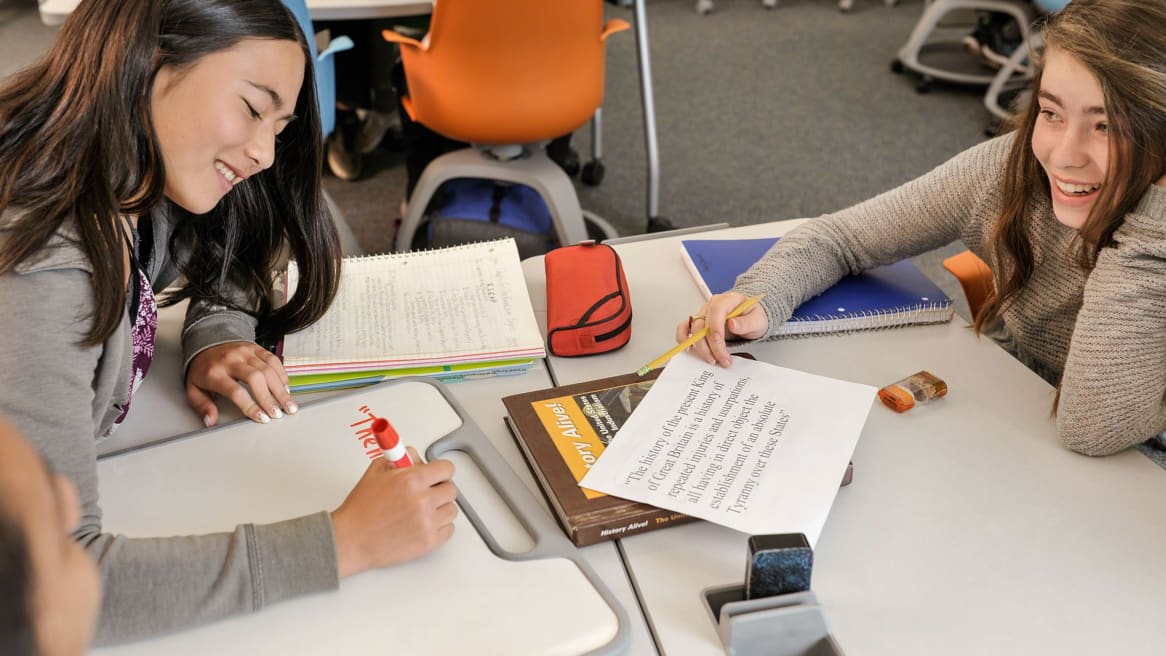Guide to Personalised Learning Experiences
Eight Strategies to Implement Personalised Learning Experiences
4. Empower Student Choice + Voice
In a traditional learning environment, it’s not uncommon for students to feel the teacher is responsible for teaching them, not that they’re responsible for their own learning. To cultivate a personalised learning environment, offer options and give students a choice for how they’d like to learn a topic. By allowing students to feel they have control over their learning, they make the shift from passive recipient to active owner of their knowledge. Owning their learning naturally leads to greater engagement.
Methods
Let students make choices over their goals, tasks, pace, process, environment and demonstration of knowledge.
Engage students in self-reflection over the choices they are making.
Broaden a sense of responsibility by having students engage in projects relevant to current events or that matter to the community.
Story from the Field
In one school, students are responsible for everything from determining what to do during a particular block of time to running class meetings to preparing and cleaning up after snacks and meals.
One teacher shared, “As students show growth, they gain ownership. They don’t ask about grades, they see connections between ideas. They are no longer little puppies, they are responsible people. The students themselves can articulate how they have changed. They utilize their freedoms differently. Little tiny nuances of behaviour. Their goals, their plans, become more real.”
Launch Pad: Try these Personalised Learning activities today
Facilitate Roles and Responsibilities
Let students know what’s expected of them. Facilitate a discussion on classroom jobs and encourage students to take responsibility not only for completing tasks but offering suggestions for improvement.
Offer Choices
Give students a choice over with whom, what, where and how they complete their work.
Encourage Feedback
Create a forum for student feedback and recommendations for improvements.
NEXT CHAPTER – Establish Simple Guiding Principles
PREVIOUS CHAPTER – Nurture Trust by Granting Freedom


